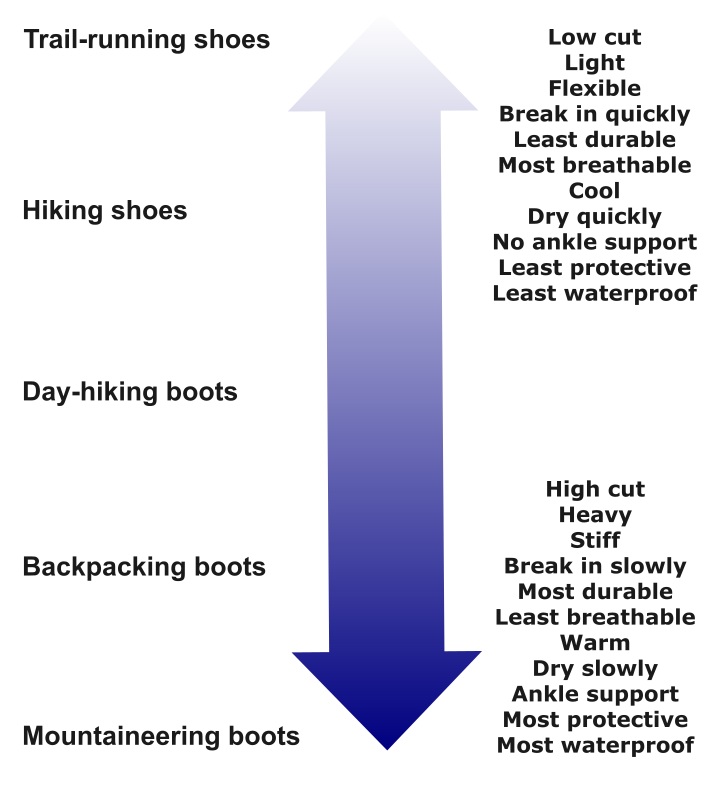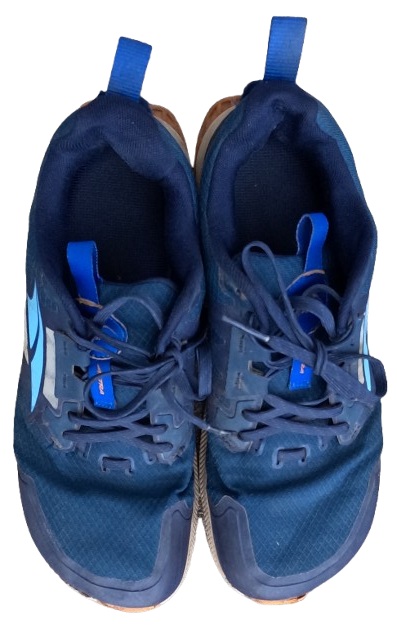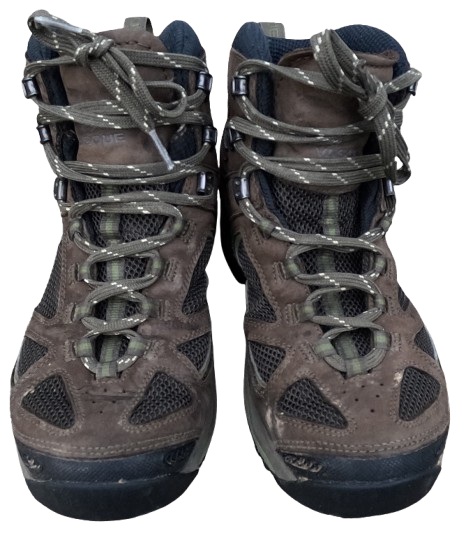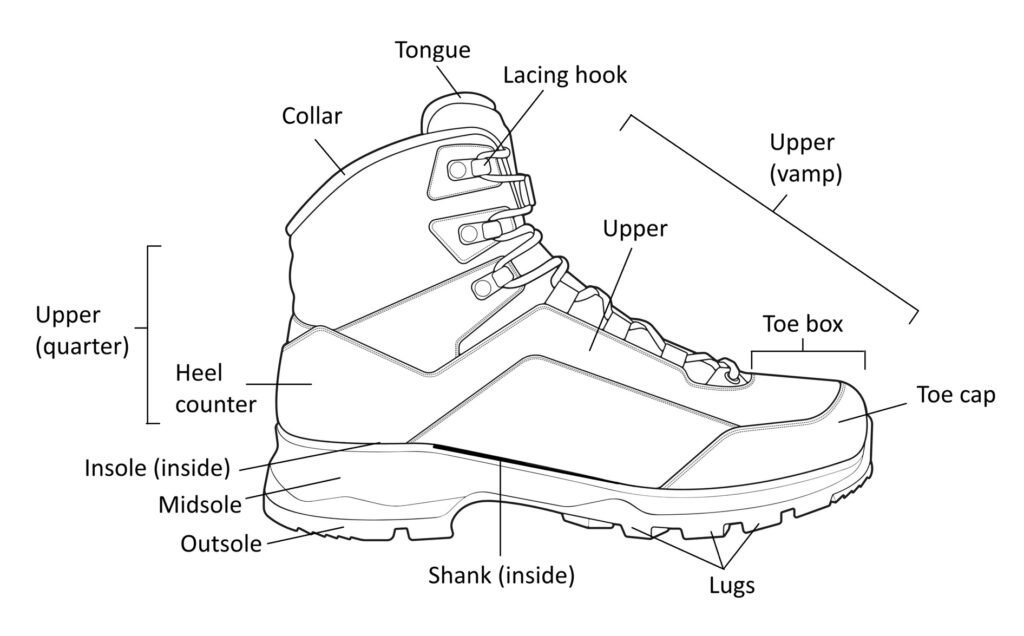Learn about Footwear and Socks for Backpacking

Table of Contents
Types of Hiking Footwear
Hiking footwear products lie somewhere on the following spectrum:


Altra Lone Peak 6

Vasque Breeze, Gore-tex
Choosing Footwear
Ask 10 people about hiking footwear, and you’ll get 10 contradictory opinions. Different feet require different footwear.
The conventional wisdom has been that backpackers should wear backpacking boots to prevent foot injury. This is no longer the consensus. Intuitively, backpacking boots may seem better for supporting your ankles, protecting your feet, and keeping them dry, but it’s not that simple.
Although high-cut boots provide more ankle support than low-cut hiking shoes or trail-running shoes, thick-soled boots typically have a high stack height and a high heel-to-toe drop, making it easy to roll your ankle.1,2
Boots are more waterproof than hiking shoes or trail-running shoes but are less breathable and more prone to soaking your feet with sweat. They also dry much more slowly. Trail-running shoes are the fastest-drying footwear.
This topic is too complex, subjective, and controversial to address in this article. To know what footwear is best for you, consult a pedorthist or podiatrist. As a cheaper alternative, some sports shoe stores provide a free gait analysis and recommendations. Fleet Feet franchise stores will measure your feet with 3D scans and computerized pressure plates. Some of their stores will offer a free consultation with a physical therapist.
My only advice is to make sure your footwear is durable enough not to blow out when you’re at the top of a mountain 10 miles from your car.
Gore-Tex Footwear
Gore-Tex footwear may not be breathable enough to justify the cost. It also takes long to dry when wet from mud, stream crossings, or sweat. However, Gore-Tex boots may be appropriate in snow and cold weather .
Footwear Construction

Footwear Glossary
| Term | Definition |
|---|---|
| Collar | Portion surrounding the ankle at the topline, often padded |
| Heel-to-toe drop (aka drop) | Difference between the height of the cushion at the heel and the cushion at the forefoot |
| Footbed | Surface that contacts the bottom of the foot; may be the insole or a removable cushion on top of the insole |
| Insole | Lining built into the bottom fo the shoe (not removable) |
| Lining | Material on the inside of the shoe |
| Lugs | Treads extending on the outsole to provide traction |
| Midsole | Layer between insole and outsole; provides cushioning |
| Outsole | Outermost layer of the sole. Provides durability and traction |
| Quarter | Rear part of the upper, surrounding the heel, behind the vamp |
| Shank | Optional supportive structure between the insole and outsole along the length of the arch, usually only in heavy boots |
| Stack height (aka stack) | Maximum height of the midsole |
| Toe box | The space containing the toes |
| Tongue and Lacing | adjust fit transport moisture from the sock to the outside where it can evaporate |
| Topline | The top edge of the upper |
| Upper | Top portion of the shoe that covers the top of the foot from heel to toe; includes the quarter, vamp, tongue, and lining. |
| Vamp | The front part of the upper, in front of the quarter |
Hiking Socks
Hiking Sock Materials
Make sure your socks don’t contain cotton, as it absorbs moisture, which can cause blisters.
Merino wool socks regulate temperature and prevent foot odor but wear out quickly.
Synthetic socks last long but stink from foot odor.
I recommend a blend of merino wool and synthetic fiber.
Liner Socks
Liner socks are thin, light, highly breathable socks worn under hiking socks. They often have a separate compartment for each toe. Liner socks wick and evaporate perspiration from your feet to prevent blisters. Although not necessary, they’re worth the price. On hot days, you can keep your feet cool by wearing only liner socks without hiking socks.
